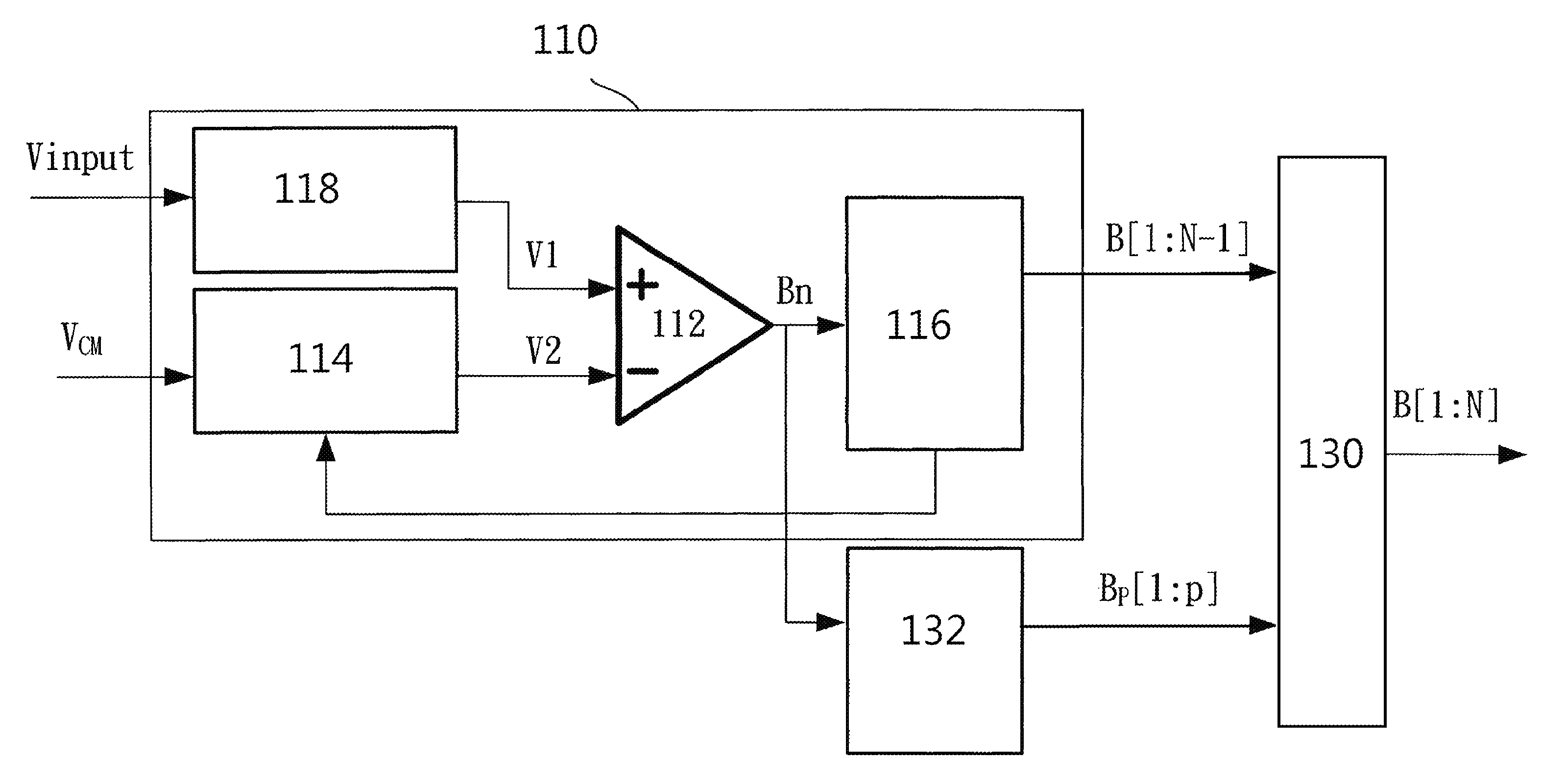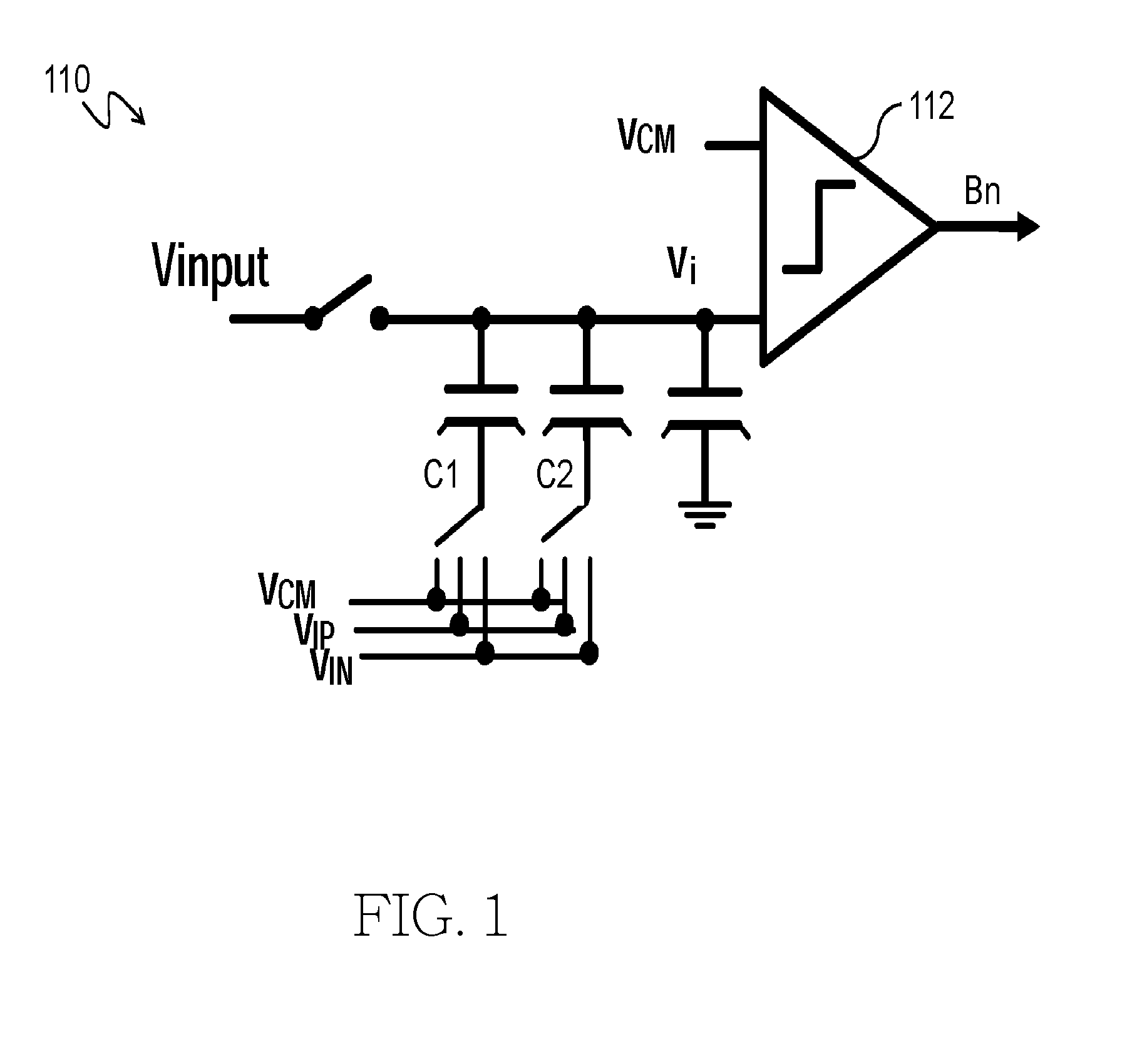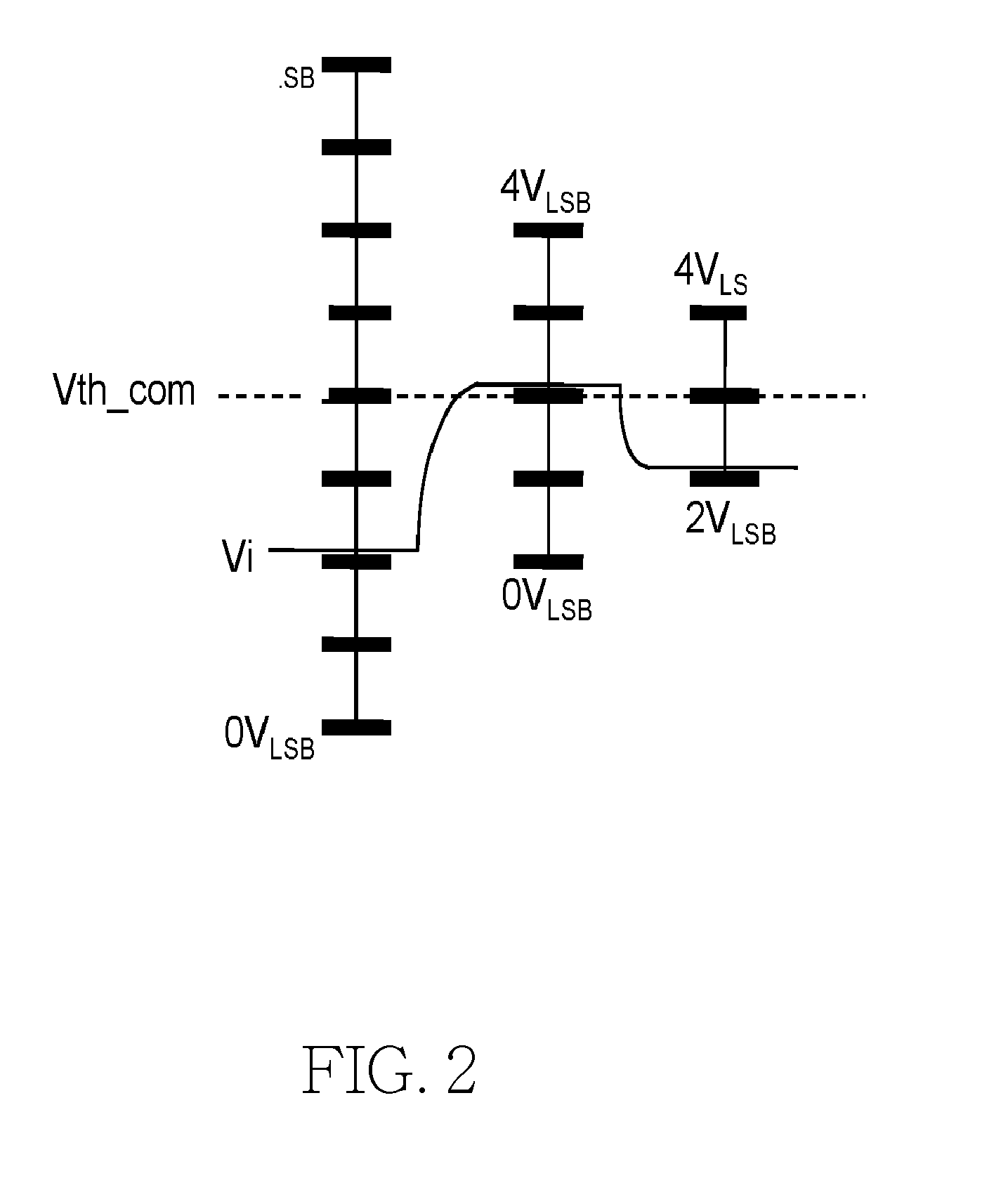Anti-noise successive approximation analog to digital conversion method
a technology successive approximation, applied in the field of analog to digital conversion, can solve the problems of increasing the manufacturing cost of the circuit, affecting the conversion effect, and affecting the conversion effect, and unable to solve the noise problem completely
- Summary
- Abstract
- Description
- Claims
- Application Information
AI Technical Summary
Benefits of technology
Problems solved by technology
Method used
Image
Examples
Embodiment Construction
[0022]Referring to FIGS. 1 to 9, an anti-noise successive approximation analog to digital conversion apparatus in accordance with the invention comprises a successive approximation analog-to-digital converter (SAR ADC) 110, a digital error correction circuit 130, and a comparison control circuit 132. The SAR ADC 110 is one of available successive approximation analog to digital conversion devices and comprises a first comparator 112, an analog-to-digital converter (ADC) 114, and a successively approaching control circuit 116. The first comparator 112 comprises a first input V1 for receiving a first analog signal, a second input V2 for receiving a second analog signal, and an output Bn. The ADC 114 is electrically connected to the second input V2. The successively approaching control circuit 116 is electrically connected to a control of the ADC 114 and an output Bn of the first comparator 112 as shown in FIG. 8.
[0023]As shown in FIG. 1, a three-bit SAR ADC 110 having a single input i...
PUM
 Login to View More
Login to View More Abstract
Description
Claims
Application Information
 Login to View More
Login to View More - R&D
- Intellectual Property
- Life Sciences
- Materials
- Tech Scout
- Unparalleled Data Quality
- Higher Quality Content
- 60% Fewer Hallucinations
Browse by: Latest US Patents, China's latest patents, Technical Efficacy Thesaurus, Application Domain, Technology Topic, Popular Technical Reports.
© 2025 PatSnap. All rights reserved.Legal|Privacy policy|Modern Slavery Act Transparency Statement|Sitemap|About US| Contact US: help@patsnap.com



